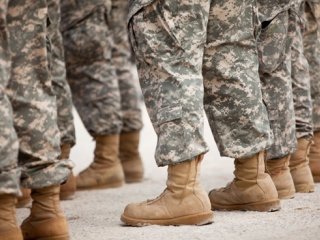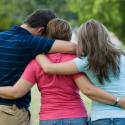Posted June 10th, 2014
By Guest Blogger
June is PTSD Awareness Month. Posttraumatic Stress Disorder (PTSD) is an anxiety disorder that may develop after exposure to a traumatic event. A traumatic event is something terrible and scary that you see, hear about, or that happens to you, like:
- Combat exposure
- Child sexual or physical abuse
- Terrorist attack
- Sexual or physical assault
- Serious accidents, like a car wreck
- Natural disasters, like a fire, tornado, hurricane, flood, or earthquake
Anyone who has gone through a life-threatening event can develop PTSD including military troops who served in wars; rescue workers for catastrophes like the 2001 terrorist attacks on New York City and Washington, D.C.; survivors of the Oklahoma City bombing; survivors of accidents, rape, physical or sexual abuse, and other crimes; immigrants fleeing violence in their countries; survivors of earthquakes, floods, and hurricanes; and those who witness traumatic events. Family members of victims can develop the disorder as well.
According to the National Center for PTSD, about 8 out of every 100 people (or 7-8% of the population) will have PTSD at some point in their lives. About 5.2 million adults have PTSD during a given year. This is only a small portion of those who have gone through a trauma. Women are more likely than men to develop PTSD. About 10% of women develop PTSD sometime in their lives compared with 5% of men.
The National Center for PTSD is working to raise awareness about PTSD and the importance of awareness. That is why their focus this year is to Learn, Connect and Share. Their campaign aims to encourage all Americans to educate themselves about PTSD, its signs/symptoms and treatment.
Symptoms of PTSD:
1. Reliving the event (also called re-experiencing symptoms)
Memories of the traumatic event can come back at any time. People affected may feel the same fear and horror they did when the event took place. For example, they may experience:
- Nightmares.
- Feeling like they are going through the event again. This is called a flashback.
- They may see, hear, or smell something that causes them to relive the event. This is called a trigger. News reports, seeing an accident, or hearing a car backfire are examples of triggers.
2. Avoiding situations that remind them of the event
They may try to avoid situations or people that trigger memories of the traumatic event. They may even avoid talking or thinking about the event. For example, they may:
- Avoid crowds, because they feel dangerous.
- Avoid driving if they were in a car accident or if their military convoy was bombed.
- Avoid watching movies about a natural disaster if they experienced one.
- Avoid or put off seeking help because it keeps them from having to think or talk about the event.
3. Negative changes in beliefs and feelings
The way that they think about themselves and others changes because of the trauma. This symptom has many aspects, including the following:
- They may not have positive or loving feelings toward other people and may stay away from relationships.
- They may forget about parts of the traumatic event or not be able to talk about them.
- They may think the world is completely dangerous, and no one can be trusted.
4. Feeling keyed up (also called hyperarousal)
They may be jittery, or always alert and on the lookout for danger. They might suddenly become angry or irritable. For example, they may:
- Have a hard time sleeping.
- Have trouble concentrating.
- Be startled by a loud noise or surprise.
- Want to have their back to a wall in a restaurant or waiting room.
Some of the treatments available:
Cognitive behavioral therapy (CBT) is one type of counseling. Research shows it is the most effective type of counseling for PTSD. The VA provides two forms of cognitive behavioral therapy to Veterans with PTSD: Cognitive Processing Therapy (CPT) and Prolonged Exposure (PE) therapy.
Medications have been shown to be effective. A type of drug known as a selective serotonin reuptake inhibitor (SSRI), which is also used for depression, has been found to be effective for many being treated for PTSD.
In Group therapy, they talk with a group of people who also have been through a trauma and who have PTSD. Sharing their story with others may help them feel more comfortable talking about their trauma. This can help them cope with their symptoms, memories, and other parts of their life.
In Brief psychodynamic psychotherapy, they learn ways of dealing with emotional conflicts caused by trauma. This therapy helps them to understand how their past affects the way they feel now.
Family therapy is an important treatment option because PTSD can affect the whole family. A therapist helps them and their family to communicate, maintain good relationships, and to cope with tough emotions. The family can also learn more about PTSD and how it is treated.
PTSD Awareness Day 2014
The National Child Traumatic Stress Network invites everyone to bring greater awareness to the issue of posttraumatic stress disorder (PTSD). The more people know the more they can do to help. With knowledge comes understanding; a willingness to share experiences, provide support and to reduce the stigma. Remember to Learn, Connect and Share.
One way to learn about PTSD and other behavioral health topics is through Ed4Career. Ed4Career is proud to offer an extensive catalog of courses for individuals interested in learning more about behavioral health and for those who want to work as direct support professionals. Please visit our website here to learn more.




